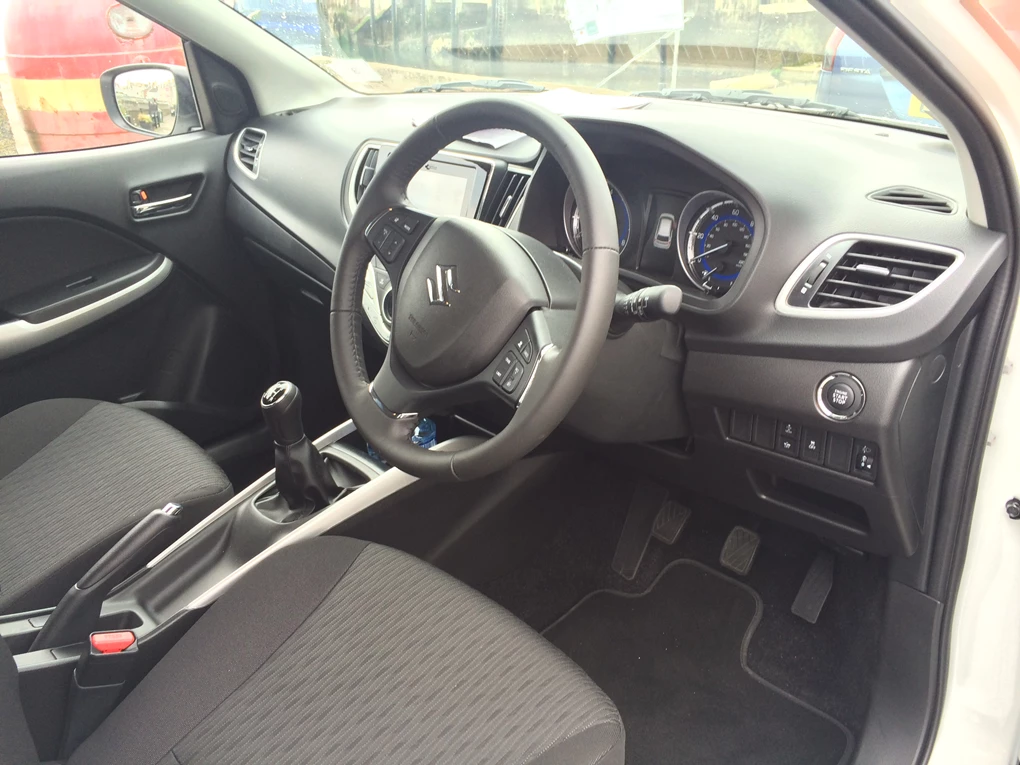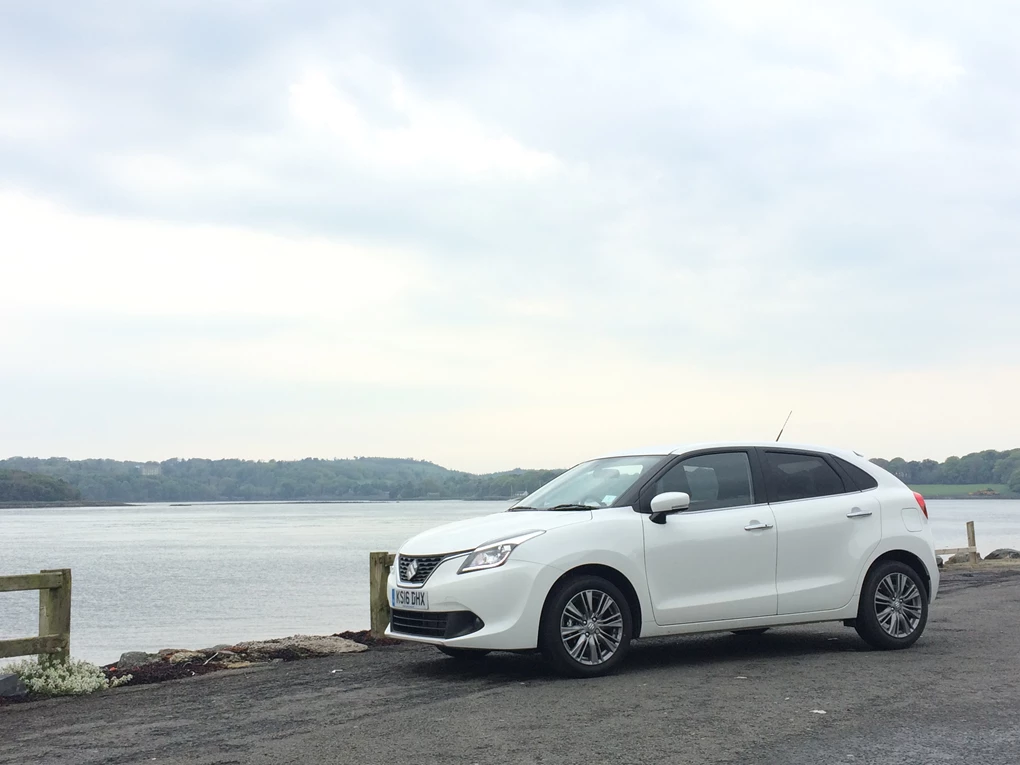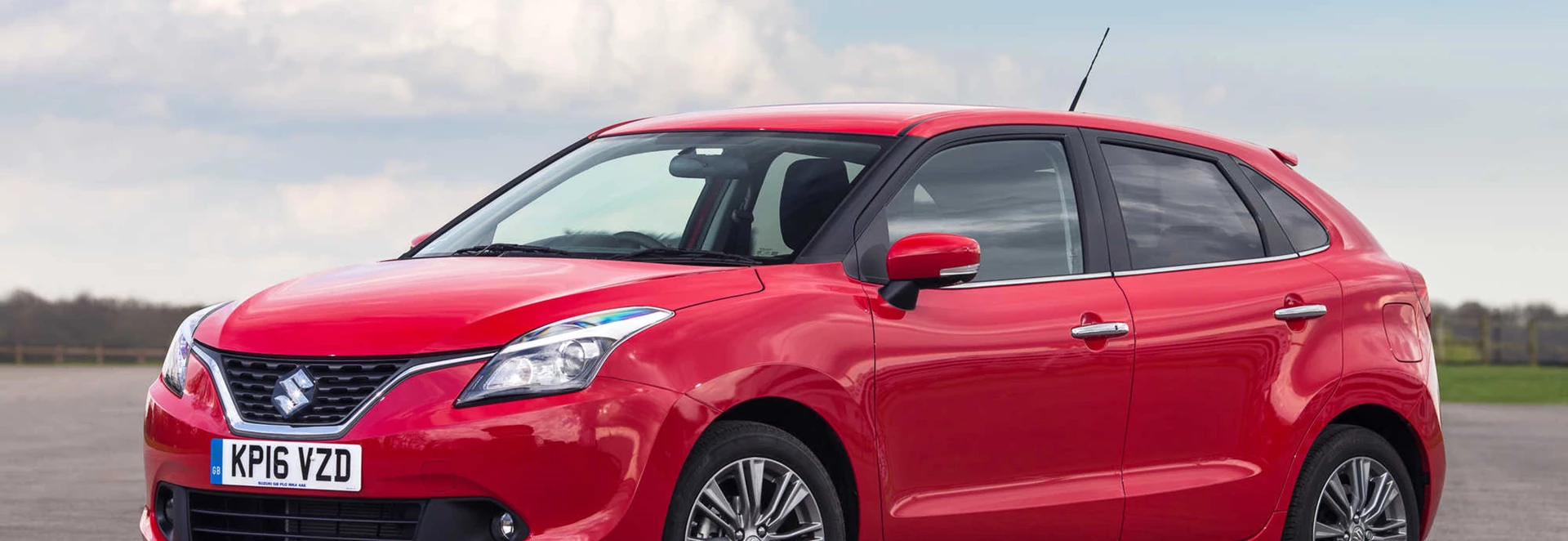Yes, it’s another Suzuki supermini, and no the Swift isn’t going anywhere soon, so don’t worry about that. What the Baleno is intended to be is a more grown-up alternative to the likes of the cheeky little Swift, a more sensible alternative to the regular B-segment cars for a different breed of buyer.
It’s on the same level as cars like the Skoda Fabia and Dacia Sandero and aims to appeal to customers who want an inexpensive and practical car but who just don’t want or can’t justify something as big as a Vitara.
The Baleno also fits into a very interesting place in the market. Suzuki has taken something of a Goldilocks approach by putting it in the dead centre of the market. While some superminis are bigger and some are smaller, the Baleno is exactly in the middle.
Likewise, while some buy cars based on emotional appeal alone and others choose theirs for altogether more rational criteria, the Baleno aims to bridge that gap as well. In short, it’s meant to be a car that you’ll buy for practical reasons, but that you’ll enjoy driving too.

Performance
From launch, two powertrain options are available with the Baleno, starting with a downsized 1.0-litre version of the feisty 1.4-litre turbocharged petrol Boosterjet engine that first appeared in the Vitara S late last year.
A small three-pot motor in the same vein as Ford’s acclaimed 1.0-litre EcoBoost, maximum power for the 1.0-litre Boosterjet clocks in at 109bhp with 170Nm of torque available from just 2,000rpm.
Brilliantly lively, the little Boosterjet pulls hard and happy even low in the rev range, with the generous torque rating propelling it onwards at an impressively nippy rate. The Baleno only weighs a tiny 950kg at its porkiest, and as a result it can scamper from 0-62mph in 11.4 seconds with the standard five-speed manual gearbox or 11 seconds flat with the optional six-speed auto.
It does start to moo a little when you get high into the rev range and like many three-cylinder engines it can start to feel like it’s shaking around inside the bonnet, but it’s fairly economical too when you’re not giving it the beans.
Suzuki claims that the Boosterjet engine can return up to 62.7mpg with 105g/km of CO2, and while we didn’t reach quite that high on our test drive we did consistently achieve economy in the high forties.
The Baleno also comes with the option of a ‘mild hybrid’ in the form of the Smart Hybrid Vehicle by Suzuki (SHVS) version. Pairing a 1.2-litre petrol engine with a small 2.3kW electric motor, it’s not a hybrid in the same vein as, say, a Prius, but rather the generator assists the motor to conserve fuel.
We didn’t get the chance to drive the hybrid option on the car’s launch, but Suzuki’s official figures says that the hybrid, which comes exclusively with the five-speed manual gearbox, can return up to 70.6mpg with just 94g/km of CO2.

Ride and Handling
The steering feels quick and direct, and the suspension copes reasonably well in the corners.
The reason that the Baleno is so light on its feet is thanks to the fact that it’s built on an all-new platform designed specifically to shed weight without impacting chassis rigidity. In handling terms at least, low weight and high rigidity are two flavours that go together as well as chocolate and peanut butter. That’s not to say that the Baleno is the best handling car in its class because it certainly doesn’t have a patch on the likes of the Fiesta, but all things considered it’s not half bad. Although the steering feels a bit numb it’s quick and direct, and the suspension copes reasonably well in the corners. There is a bit of leaning and rolling when you really step on it, but then it’s not supposed to be as chuckable as the smaller and scrappier Swift. It does leave a little to be desired in terms of refinement, however. There’s quite a bit of noise from the tyres and the wind that creeps through into the cabin, and the addition of a sixth gear for the manual gearbox would be welcome particularly on motorways where the engine tends to get a bit shouty at speed.

Interior and Equipment
Baleno is the Italian word for ‘flash’. Alternatively, it also means ‘whale’ in Esperanto…
Only two trim levels are available for the Baleno, with the SZ-T serving as the entry point to the range, while the SZ5 tops the range. If that seems a little restrictive, it’s not really. Suzuki just recognises that most supermini buyers don’t ever bother with the basic models, and so the SZ-T trims the fat and is more comparable to a mid-spec car from rival marques. It boasts a highly impressive list of standard equipment as well, with all Baleno models getting 16-inch alloy wheels, DAB radio, sat-nav and Apple CarPlay connectivity. Opting for the SZ5 model adds adaptive cruise control and start-stop for just an extra £1,000, while the SZ5 also gets the option of the automatic gearbox with flappy paddles. However, while it comes packed with equipment, the Baleno’s interior is far from perfect. The over use of dark and scratchy plastics can make the cabin seem a little on the cheap side and somewhat gloomy compared to many of its rivals. Of course, it’s not meant to be a premium car by any means but when you’ve got an interior that’s decidedly more on the utilitarian side of things, it might tempt many buyers to spend more cash for a car that looks and feels a bit more contemporary. It’s not all bad though, as the Baleno comes with plenty of room for passengers inside thanks to clever packaging which gives it a lot more space inside than many of its competitors, particularly in the rear. Boot space clocks in at a fairly generous 302 litres with the rear seats upright, but they fold down almost flat to increase cargo capacity to 1,085 litres.
Cost
There are virtually no rivals which offer equipment like sat-nav as standard across the board, and certainly not at this price point.
In all, it’s not bad in the slightest when you consider that the Baleno range starts from just £12,999. No, it’s not the cheapest car in its segment, but there are virtually no rivals which offer equipment like sat-nav as standard across the board, and certainly not at this price point. Consider as well the fact that opting for the top level trim, which adds desirables like cruise control, costs less than some individual options on some competitors and from an economic point the Baleno makes a serious amount of sense. Both powertrain options are fuel efficient and won’t cost much to tax either, while the Baleno sits in the 11E insurance group, meaning that your premium shouldn’t be too pricey either.
Our Verdict
The main problem with the Baleno is that it lacks something of that emotional appeal, particularly thanks to its slightly frumpy design that’s a long way from sleeker, sexier rivals like the Polo or the MINI. But beauty is only skin deep so they say, and there’s an awful lot to like about Suzuki’s latest B-segment car if you dig under the surface. It’s not without its caveats, but thanks to plenty of space, an impressive kit list and that energetic little Boosterjet engine, the Suzuki Baleno does the sensible supermini better than most, and for less money.





